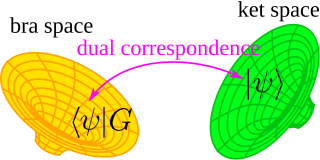News
- Home
- News

For Hermitian quantum many-body systems, fidelity susceptibility is a theoretical tool for studying quantum phase transitions. The fidelity susceptibility detects the quantum critical point by hunting for divergence behavior in parameter space. Recently, non-Hermitian systems, where the Hamiltonian is non-Hermitian, have attracted the attention of condensed matter physicists. In addition to quantum critical points, the non-Hermitian systems also have Exceptional Points (EP) in the parameter space, where two or more eigenvectors of the Hamiltonian coalesce into one. Dr. Yu-Chin Tzeng and his collaborators have uncovered the general properties of the fidelity susceptibility for non-Hermitian quantum systems with PT symmetry. There is no clear and unified mathematical definition of fidelity in non-Hermitian systems, and this has led to confusion among researchers on which definition to use, and potentially, different results. Based on perturbation theory with PT symmetry, Dr. Tzeng's group found that metricized fidelity provides clarity and consistency in the study of non-Hermitian systems, enabling more accurate and comprehensive investigations in the future. This has established a new paradigm for the field, guiding researchers with a clear and unified approach to studying non-Hermitian quantum systems.
Many numerical methods such as the Lanczos iteration, Density Matrix Renormalization Group (DMRG), and other tensor network algorithms are relatively easy to calculate only for the ground state, but have many difficulties in computing the excited states. Because fidelity only requires the ground state calculations, this approach allows most numerical methods to analyze non-Hermitian systems without excited states, and find the EP, as well as to determine whether it is a higher-order EP. Therefore, these general properties of the metricized fidelity will affect most of the future research on the non-Hermitian quantum systems, especially when the real situation becomes complicated, the matrix dimension is too large, and the numerical method can only obtain the ground state. The paper published in Quantum 7, 960 (2023) makes fidelity a powerful theoretical tool for studying non-Hermitian quantum systems.
在厄米量子多體系統中,保真率是研究量子相變的理論工具,它透過尋找參數空間中的發散行為來檢測量子臨界點。最近,哈密頓量為非厄米的系統引起了凝聚態物理學家的注意。除了量子臨界點之外,非厄米系統在參數空間中還具有異常點(EP),其中兩個或多個哈密頓量的特徵向量合併為一個。 曾郁欽博士和他的合作者揭示了保真率在具有 PT 對稱性的非厄米量子系統中的一般性質。由於非厄米系統中的保真度沒有明確統一的數學定義,導致研究人員對使用哪個定義以及產生不同結果的可能性感到困惑。曾博士的研究小組發現,基於 PT 對稱的微擾理論,度量保真度為非厄米系統的研究提供了清晰度和一致性,使未來能夠對非厄米系統進行更準確、更全面的研究。這項研究成果為該領域建立了一個新的範式,指導研究人員以清晰、統一的方法來研究非厄米量子系統。
許多數值方法,如Lanczos疊代、密度矩陣重整化群(DMRG)和其他張量網路演算法,僅計算基態相對容易,但計算激發態有許多困難。由於保真度只需要基態計算,這使得大多數數值方法可以在沒有激發態的資訊下分析非厄米系統,找到 EP 並確定它是否為高階 EP。因此,度量保真度的這些一般性質將影響未來對非厄米量子系統的大部分研究,特別是當實際情況變得複雜、矩陣維度太大、數值方法只能獲得基態時。發表在 Quantum 7, 960 (2023) 上的論文讓保真度從此成為研究非厄米量子系統的強大理論工具。